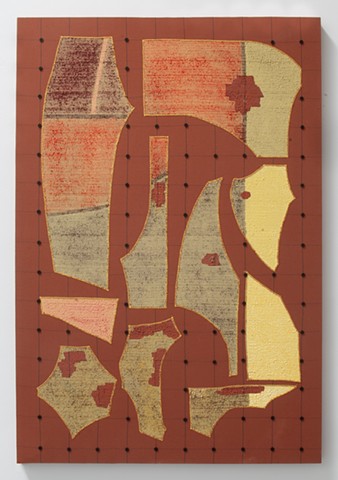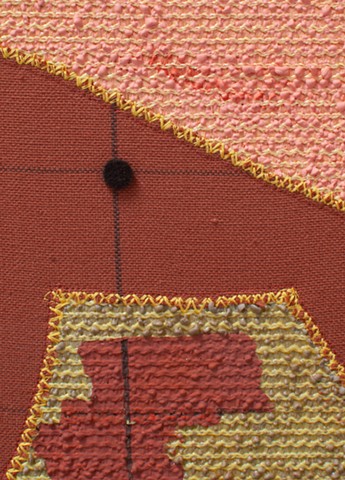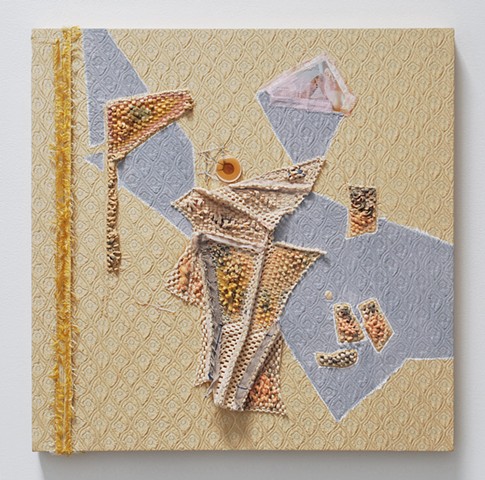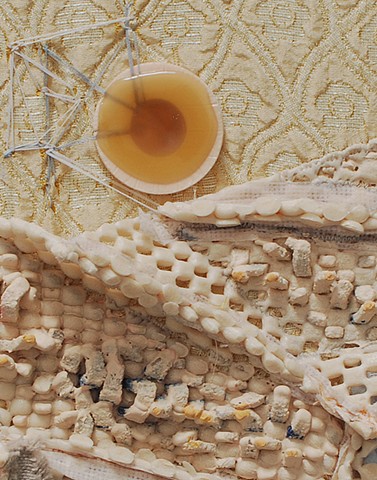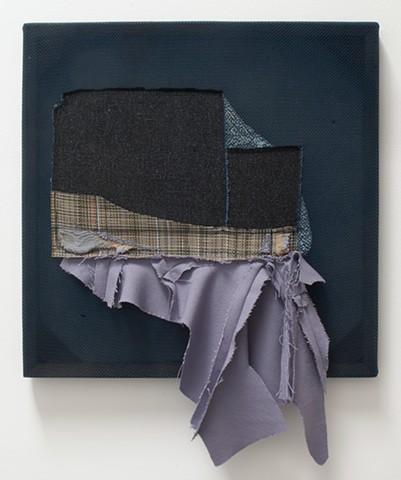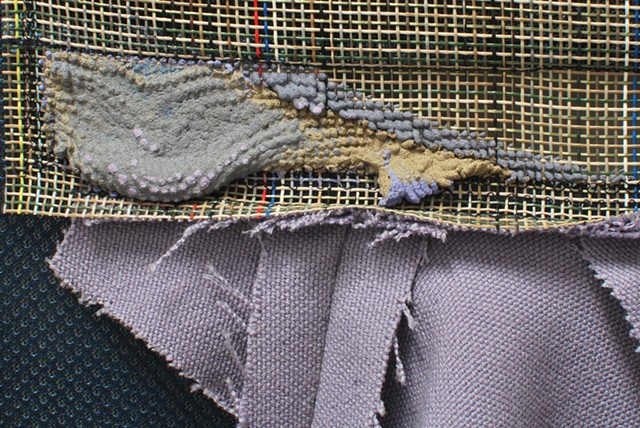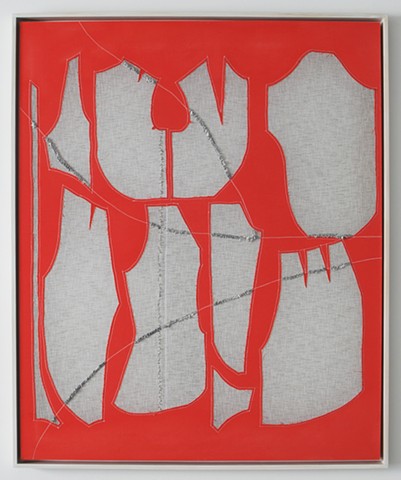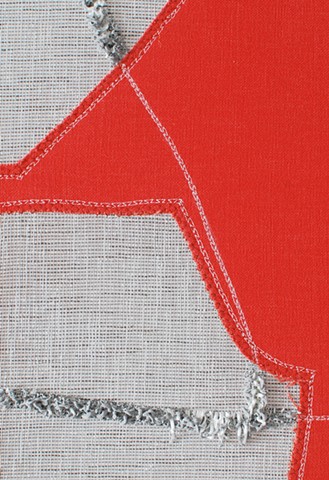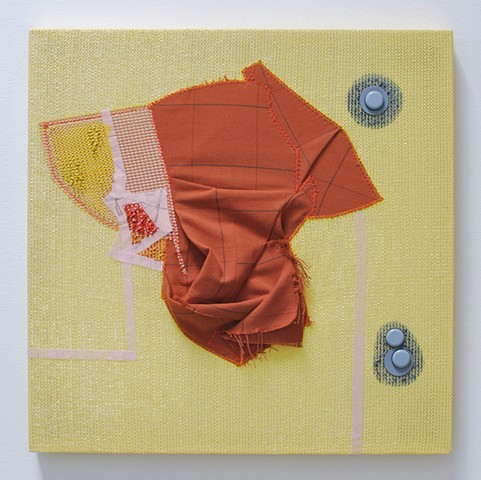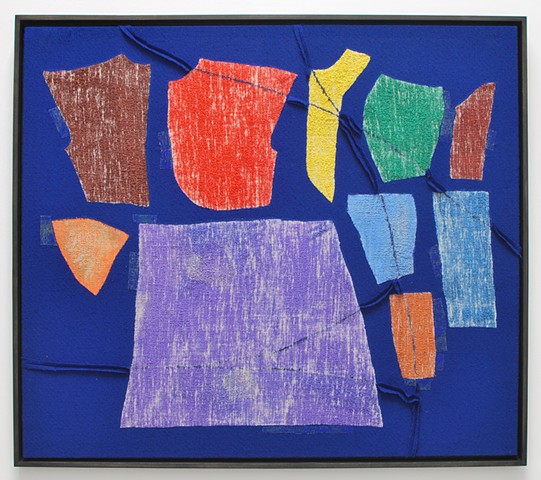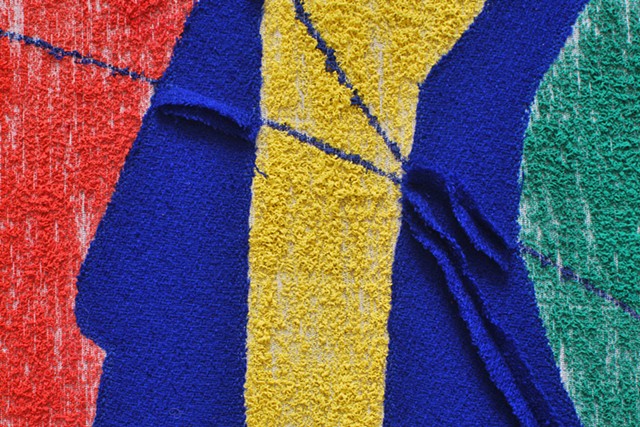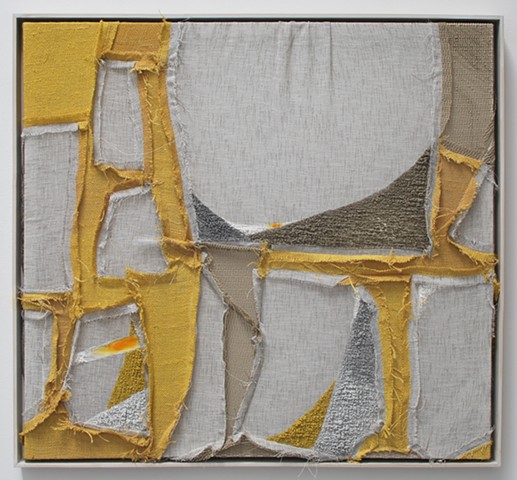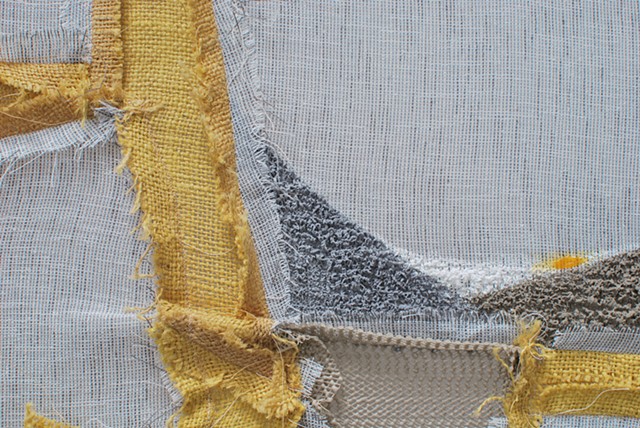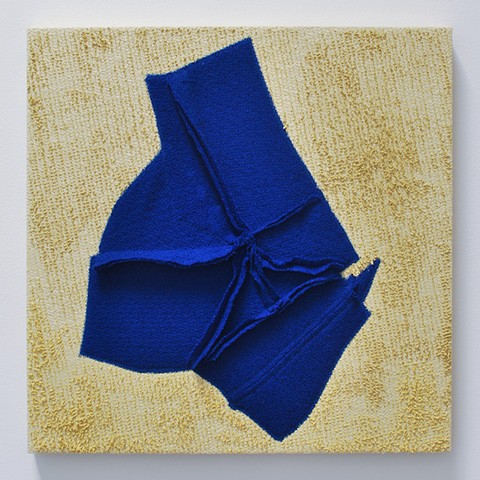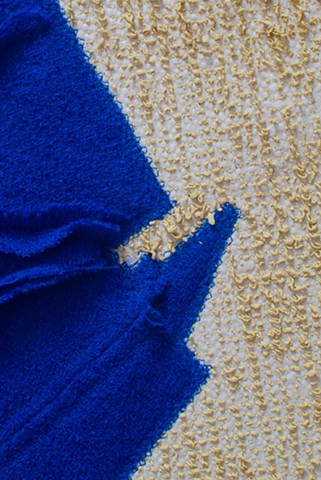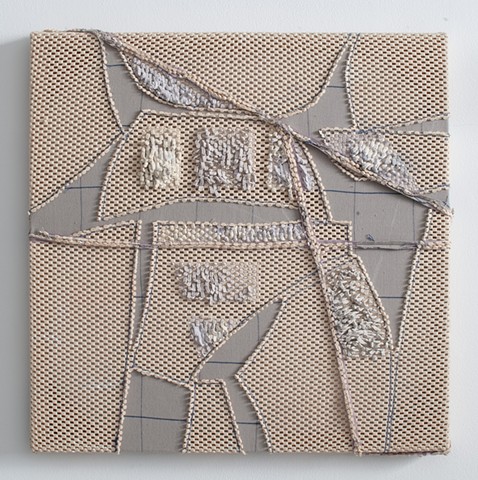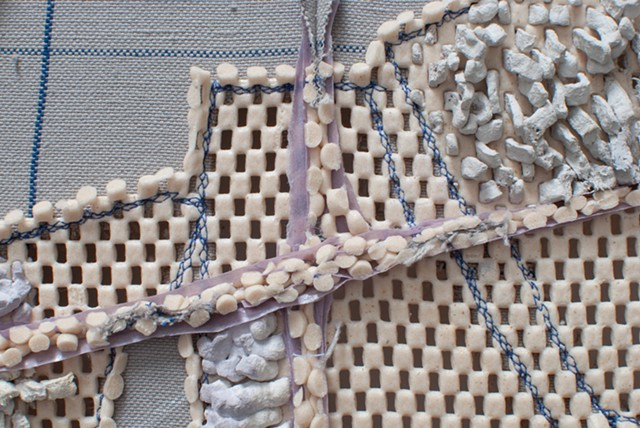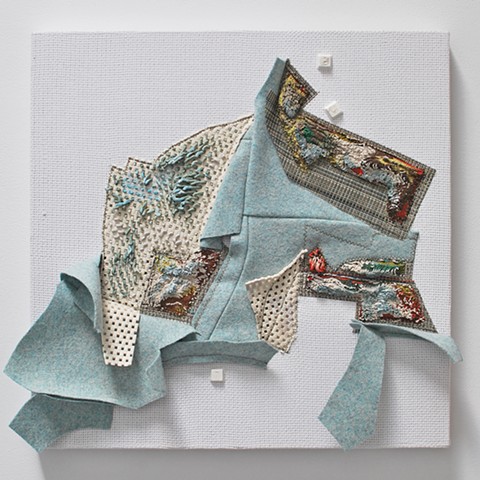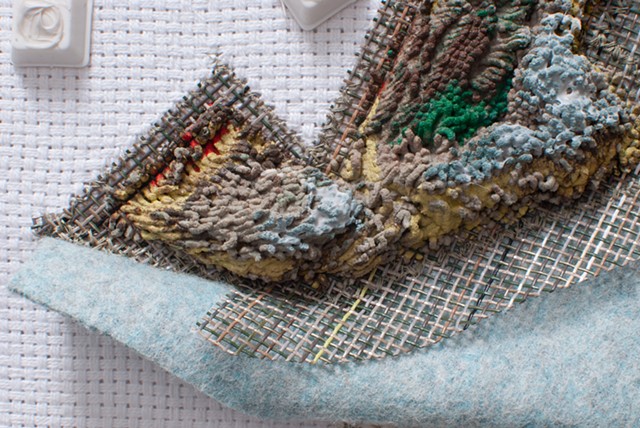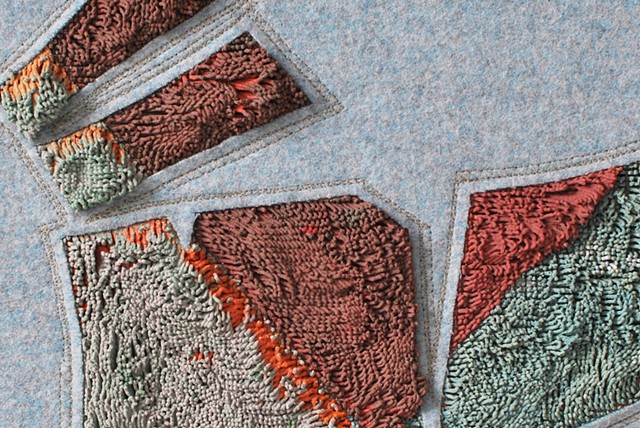Spirit of Scrappiness
How might we apply an ecology of care to the discarded, the overlooked and the forgotten? What redemption is to be found in assigning beauty and purpose to the ruins, to working within a set of inherited parameters, limited to what we already have? Spirit of Scrappiness, an exhibition of new abstract textile works by Tana Quincy Arcega, bridges materiality and sustainability to reveal an embodied philosophy of resilience, tenacity, and tender playfulness.
For Quincy Arcega, scrappiness is both a personal belief system and an existential imperative—a practice that transcends the internal and external to transform fragmented parts into a unified whole. In this new body of work, Quincy Arcega’s unique history is interwoven with concepts of care, manifested by her (re)use of remnant textiles, garment patterns, and seemingly delicate found objects. Born in Nebraska, the artist grew up learning to sew and emulate patterns in her mother’s fabric store, a material-based background that fuses with her formal art training in figurative painting and sculpture. Quincy Arcega understands the notion of scrappiness as an extension of the fabric industry itself—from the invisible laborers who must personify scrappiness as a means of survival, to the inanimate shreds of leftover textiles deemed unimportant or expendable.
Quincy Arcega’s practice invites degrees of tension into her works through each composition’s negotiation of form and function, as well as the artist’s process of stretching, threading, layering, and extruding. She describes her technique as “material rhyming,” in which myriad textures, colors, lines and shapes coalesce in poetic visual topographies. By stitching together fragments representative of time, place and identity, Quincy Arcega’s works double as psychographic maps, tracing her own creative history through what the artist describes as a “mimicry of materials.”
When viewed holistically, Spirit of Scrappiness testifies to an ethos of upside-down consumerism, a mindset and a worldview desperately needed to confront the challenges imposed by climate change and a fraying social fabric that can feel increasingly untenable. When we combine the two literal meanings of scrappy, we get a pugnacious determination to utilize the vast odds and ends around us into a cohesive whole, ultimately choosing to be partakers in rather than consumers of materiality. Scrappiness allows us, as individuals and as part of a larger ecosystem, to reclaim value and maximize resources, to reimagine what it means to be “whole,” and to heal society, the earth and ourselves in the process.
